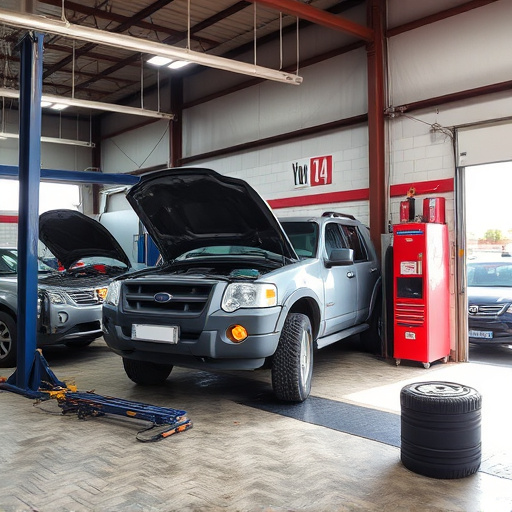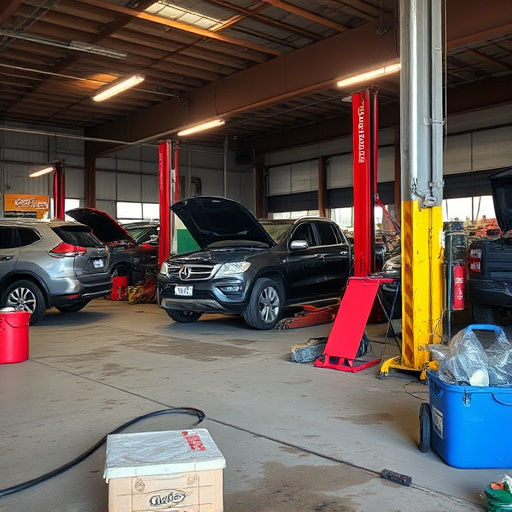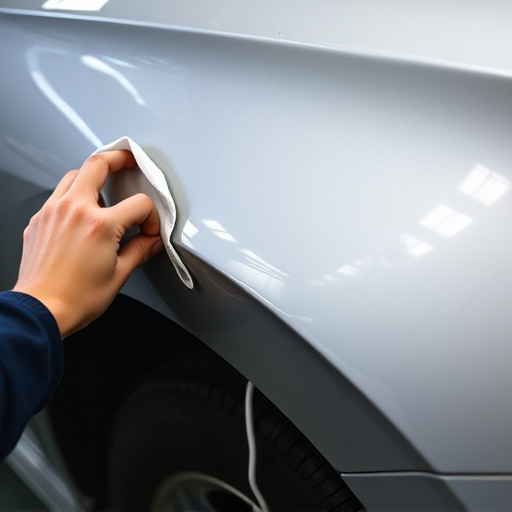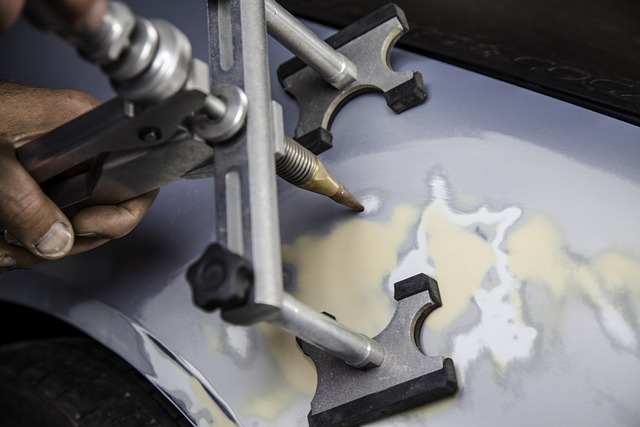Airbag module replacement requires thorough diagnostics and expert handling due to complex systems and safety implications. Damage assessment, corrosion check, and compatibility testing are crucial steps before replacing or repairing modules. Advanced tools ensure optimal airbag function and passenger protection without compromising car paint quality.
Airbag modules are critical safety features in modern vehicles, playing a pivotal role in protecting occupants during collisions. As such, accurate diagnosis and efficient replacement processes are paramount. This article delves into the intricate world of airbag modules, highlighting the diagnostic needs that underpin successful replacement. We outline practical steps for a seamless process, emphasizing the crucial role of precise diagnostics in ensuring passenger safety. By understanding these key aspects, automotive professionals can navigate the complexities of airbag module replacement with enhanced confidence.
- Understanding Airbag Modules and Their Diagnostic Needs
- Steps Involved in Efficient Airbag Module Replacement
- Ensuring Safety: The Importance of Accurate Diagnostics
Understanding Airbag Modules and Their Diagnostic Needs

Airbag modules are integral safety features in modern vehicles, designed to protect occupants during collisions. These complex systems consist of sensors, inflators, and bags that deploy at high speeds to cushion the impact. Understanding the intricate workings of airbag modules is paramount in the context of airbag module replacement, ensuring both effectiveness and safety.
During the replacement process, a car repair shop must conduct thorough diagnostics to identify any faults or discrepancies. This involves testing sensors for accurate trigger signals, inspecting inflators for proper function, and verifying the overall integrity of the module. Diagnostic tools help detect issues that might go unnoticed, preventing potential hazards. It’s not just about replacing a faulty bag but ensuring the entire system operates seamlessly, as critical safety features like these can mean the difference between life and death in the event of an accident.
Steps Involved in Efficient Airbag Module Replacement

The process of replacing an airbag module is a critical step in ensuring vehicle safety and requires meticulous attention to detail. Efficient airbag module replacement involves several key steps. First, the vehicle’s steering wheel or other affected component needs to be carefully removed, exposing the airbag module for safe access. This is followed by a thorough inspection of the module itself, checking for any signs of damage, corrosion, or malfunction—a crucial step in identifying issues that could compromise safety during deployment.
In cases where the airbag has suffered hail damage repair or collision damage repair, it might be necessary to replace the entire module rather than just repairing individual components. Auto body services specializing in this area will have the expertise and equipment to handle complex disassembly, ensuring no residual debris remains that could interfere with future deployment. Once the old module is removed, a new one is installed, tested, and verified for proper functioning, completing the airbag module replacement process effectively.
Ensuring Safety: The Importance of Accurate Diagnostics

In the critical process of airbag module replacement, ensuring safety is paramount. Accurate diagnostics play a pivotal role in this regard, acting as the bedrock for successful and secure repairs. Modern vehicles, such as those from premium brands like Mercedes-Benz, are equipped with complex systems that require meticulous attention to detail during replacements. Relying solely on visual inspections or basic troubleshooting methods can be inadequate and potentially hazardous.
Advanced diagnostic tools are essential for body shop services and mercedes benz repair experts to accurately identify issues within the airbag system. These tools enable technicians to pinpoint faulty components, detect subtle anomalies, and ensure compatibility with the vehicle’s existing systems. By leveraging precise diagnostics, body shop professionals can guarantee that each replaced airbag module functions optimally, providing the highest level of protection for every passenger without compromising on the quality of car paint services during the repair process.
In conclusion, the seamless integration of diagnostics into the airbag module replacement process is paramount for ensuring vehicle safety. By accurately identifying and addressing issues within airbag modules, technicians can facilitate efficient airbag module replacement, enhancing passenger protection and peace of mind. This comprehensive approach, combining diagnostic expertise with meticulous replacement procedures, is vital to navigating the intricate landscape of modern automotive safety standards.












